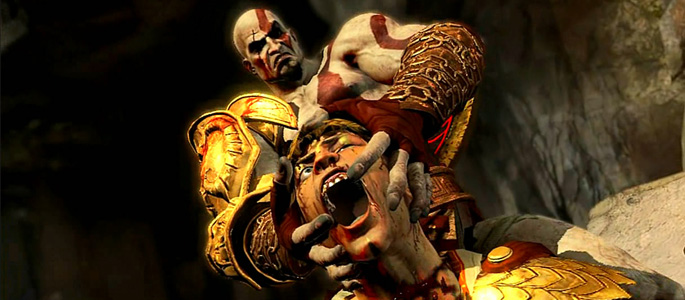
“Society has a limited amount of resources and attention to devote to the problem of reducing crime. There is a risk that identifying the wrong problem, such as media violence, may distract society from more pressing concerns such as poverty, education and vocational disparities and mental health. This research may help society focus on issues that really matter and avoid devoting unnecessary resources to the pursuit of moral agendas with little practical value.”
This statement was made by clinical psychologist Christopher Ferguson from Stetson University in the United States. It was made in light of his most recent study on violence in media and the way that it relates to violence in everyday life. In this study, the results of which have been published in the Journal of Communication, Ferguson asserts that there is no link between violence in media and an increased violence in society.
Indeed, in his overview of violent media throughout the 20th century, there was one juncture at which he found that an increased consumption of violent video games correlated with a decrease in youth violence. However, Ferguson is quick to note that, despite the decrease that is shown in the data, correlation does not equal causation (i.e., violent media does not really decrease violence).
Ultimately, the debate about violence in movies has been raging since the early 1920s. Recent times have seen this concern shift a bit to violence in video games. And the relationship between violent media and actual violence has become more of a focus in recent years, largely due to the increased number of shootings in the U.S. Yet, despite the significance of the concern, previous researchers had failed to undertake a long-term study.
Ferguson set out to rectify this issue.
Looking For Violence:
Prior to this, researchers investigated the relationship between violence and media by conducting lab experiments that test the aggression levels of people playing violent video games and watching violent films. In his paper, Ferguson argues that data obtained from lab tests isn’t meaningful, as the experiments don’t accurately mirror what occurs in real-life. As such, he decided to take a look across the course of the 20th century and see if he could spot any trends.
First, Ferguson compared media violence and actual homicide rates between the years of 1920 and 2005. In order to do this successfully, he used independent rating experts to evaluate the frequency and level of violence in the most popular movies. Once this was done, he correlated the data to homicide rates in corresponding years. Ultimately, he found that no link could be made.
Of course, there were points when the numbers seemed to align. During the middle of the century both homicide rates and instances of violence in media increased briefly. However, the opposite became true after 1990, and media violence became correlated with fewer homicides. Since the results swing so wildly, there was no way to interpret any meaningful correlation.
After this, Ferguson specifically analyzed the consumption of violent video games and the rates of youth violence. He looked at the years between 1996 and 2011, and he used independent ratings experts from the U.S. Entertainment Software Ratings Board (ESRB) to analyze the frequency and level of violence in the most popular video games. Then, he once again correlated his data to actual rates of youth violence. Again, there was no meaningful link.
So. What’s This Mean?
It must be emphasized that this study shows that there is no correlation to violence in media and violence in reality. In other words, the study indicates that violent media does not cause people to go out and commit violence. This does not mean that media does not have an impact on us.
All cultural artifacts (movies, books, art, literature etc.) reflect and contribute to how we see, understand, and interact with our world. Saying that video games (or other cultural productions) do not have an impact on our thoughts and perceptions is the same as saying that Eddie Adams Vietnam War photo (which is known as “The Photograph That Ended a War But Ruined a Life”) didn’t impact society…that it didn’t galvanize and solidify the antiwar movement in the United States (it did). It’s the same as saying that Harriet Beecher Stowe’s Uncle Tom’s Cabin didn’t galvanize and solidify the antislavery movement (it did).

“Still photographs are the most powerful weapon in the world,” AP photojournalist Eddie Adams once wrote. A fitting quote for Adams, because his 1968 photograph of an officer shooting a handcuffed prisoner in the head at point-blank range not only earned him a Pulitzer Prize in 1969, but also went a long way toward souring Americans’ attitudes about the Vietnam War.”
That’s not to say that video games (or photographs or music or books) cause violence or misogyny or prejudice, but it’s also not to say that they have no impact on us. Ultimately, the take away is simple: Our thoughts and opinions are made of a multitude of things. Media will no more make you a murderer than it will make you an angel (otherwise, we’d all watch Touched By An Angel all the time). So no. If we want to decrease violence, we should not ban certain media. But media can alter our perceptions and opinions; it can (to a greater or lesser degree) encourage or discourage certain beliefs and assumptions. So it’s important to reflect on what we believe and why. It’s important to encourage self-reflection. It’s important to analyze the ideologies implicit in the games, books, and movies that we encounter. It is important to think—all the time, think.